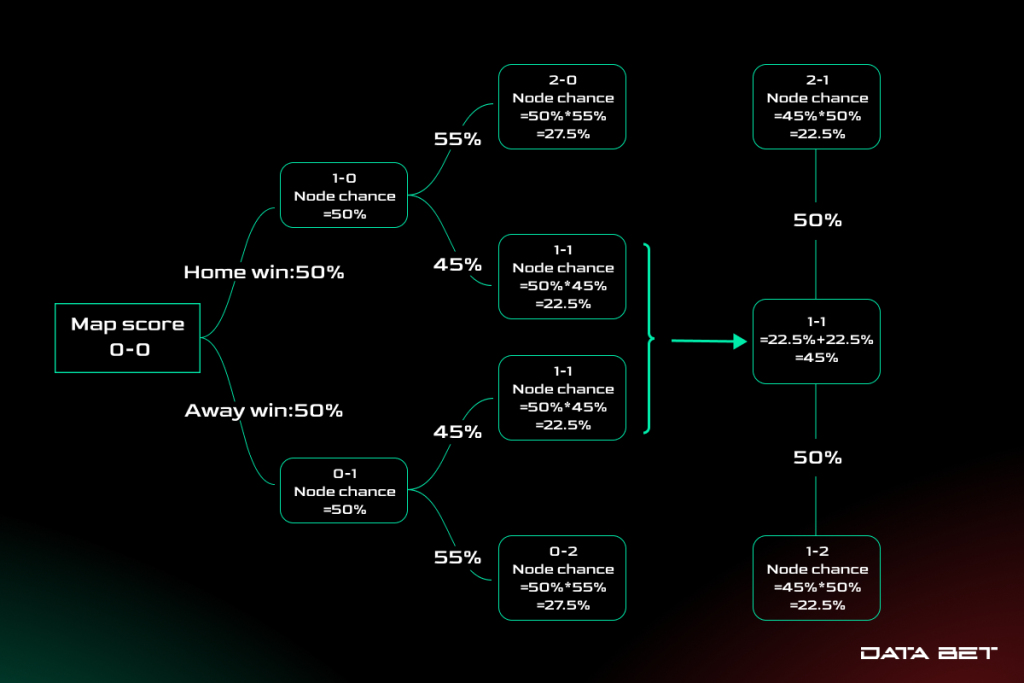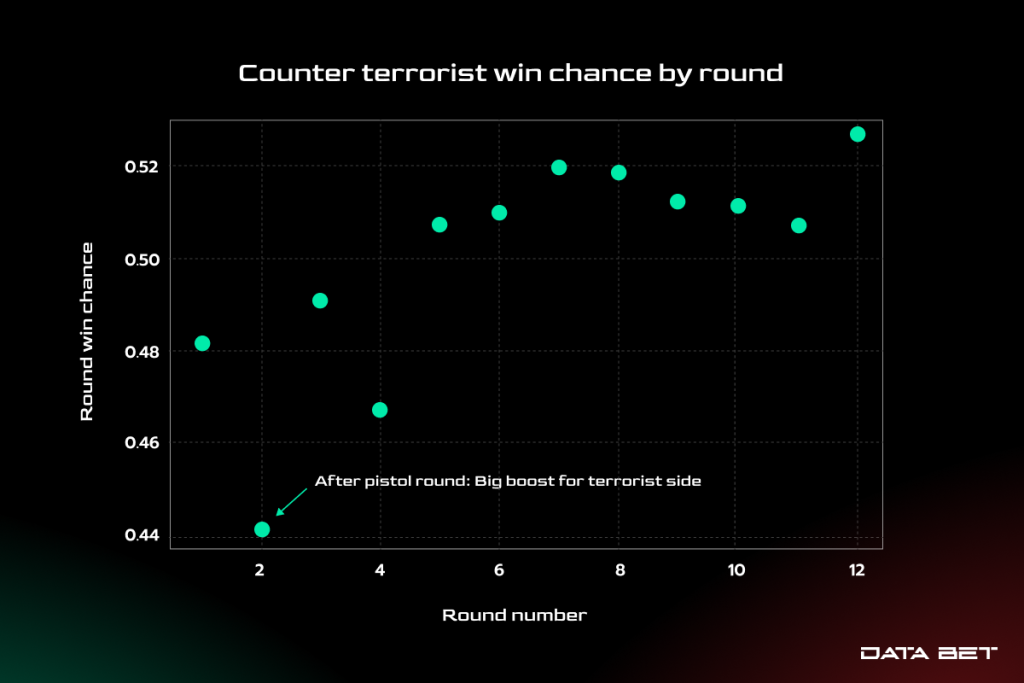
Esports disciplines have always been more complex to model than traditional sports. The complexity of the game rules and their frequent changes result in bookmakers being unable to account for all the game’s nuances. CS2 is no exception.
Modeling the outcome of a game requires multi-level analysis. Meanwhile, determining the winner of a match involves calculating the chance of winning on each map with the consideration of personal statistics of the teams on that map and who chose to play on it. Today, Yurii Lysenko, Lead Data Scientist at DATA.BET, will reveal bookmakers’ most common mistakes when creating the line in CS2 and what exactly leads to them.
Map modeling
Ignoring map statistics and pick impact is a common problem. Bookmakers often neglect to consider detailed map statistics or treat the advantage of map pick as a constant, regardless of match level. In reality, the chance of winning on a chosen map is higher for top-tier matches compared to lower-ranked matches. Professional teams choose their map picks more thoroughly, resulting in a slightly higher win probability (55% for top matches vs. 54% for lower matches).
Another problem is independent subsequent map modeling. At first glance, modeling the next map autonomously based on the first one’s result seems logical, but it is actually a gross mistake. Bayesian statistics suggest that team strengths should be adjusted based on the winner of the first map. Adjustments should be made after each won round, accumulating effects, particularly with large differences in won rounds.
The team’s level is also neglected; adjustments to team strength after a won round are made regardless of the team level. This happens because the bookmaker is not 100% confident in their line, and therefore refines it during the game. However, the confidence in the line for teams that have played many top-level matches is much higher than for new teams about which we know almost nothing. Accordingly, for a top match, we practically do not need to make adjustments since we are confident in our line, and any deviation is perceived simply as a statistical anomaly, whereas, for new teams, the adjustments should be quite significant.
These mistakes lead to incorrect predictions of the next map’s winner (when one team has the upper hand from the first map) as well as the total number of played maps even before the match begins. The chances of 2-0 and 0-2 outcomes are higher because the team that wins the first map is more likely to win the next one. Consequently, the chances of 2-1 and 1-2 outcomes are lower when considering such factors.
In the diagram below, we provided an example of how winning a map increases the chance of winning the next one, consequently increasing the chances of 2-0 or 0-2 scores. As a premium esports betting solution provider, DATA.BET addresses these issues by implementing comprehensive map modeling techniques.

Round winning modeling: round economy
Here, we actually found no fewer mistakes, which, as in the previous case, were related to ignoring the corrections for team strength depending on who won the round.
However, the impact of the economy on winning a round turned out to be much more interesting. Most bookmakers fail to account for the specifics of the economy on either the counter-terrorist or terrorist side, assuming they consider this factor at all.
As the graph shows, the chances of the counter-terrorist (CT) side winning a round depend heavily on its number, especially on the second one (after the pistol round), where CTs win only 44% of the rounds.

This can be explained by the fact that terrorists can lose the pistol but still buy decent equipment in the next one if they plant the bomb. In contrast, CTs do not have this option, so if they lose, they almost always don’t win the next one because they take eco equipment in 90% of cases. However, the money saved in the second round allows them to buy full equipment in the third, regardless of the second’s outcome.
In contrast, in the later rounds, the CTs have the advantage. Both teams usually have enough money for full equipment, and statistically, with equal full equipment, CTs win 52% of the rounds.
There are many more situations where game economy results in non-obvious patterns that are often not considered, be it the last round of a half where teams will spend all their money on equipment, or the last chance for a team not to lose a round where they definitely will not go for an eco-round.
Detailed round modeling: round-specific factors
This mistake is significantly more complex, as very few bookmakers offer a line for the current round, but it is still necessary to model it in order to obtain the correct chances of winning the map.
The most efficient factors are:
- Planted bomb: When the bomb is planted, the chance for the counter-terrorists to take the round drops to an average of 40% with an equal number of live players. This figure varies greatly for 1-1 (clutch), 2-2, 3-3 situations, etc.
- Picked-up equipment: Teams picking up weapons during a round can significantly alter their chances.
- Player coordinates: Movements on the map, especially when a team is heading to an unprotected bomb site, are often ignored. So far, we have not found any bookmaker that considers player coordinates.
- Player HP: The health of players is not considered.
By accounting for these detailed in-game factors, bookmakers can offer more accurate odds, making betting more challenging for informed players and reducing the win possibilities of being outsmarted.
Summary
Over the past years, modeling has become increasingly accurate, and the weak points in the line are becoming fewer. This leads to line availability throughout the match and expanded market options, which positively impacts the gaming experience and opens up opportunities for bettors to find new strategies. DATA.BET has refined its modeling process to incorporate all relevant factors, ensuring the lines are robust and reliable.
Addressing these common mistakes in modeling helps to create more reliable betting lines, enhancing the betting experience and maintaining fairness in the esports odds provided. Such improvements have a strong effect on the final chance of winning maps, allowing some players to successfully bet on CS2 and making the discipline very interesting for bettors. By continuously improving its methods, DATA.BET stays at the forefront of the industry, providing its clients with the best possible esports betting solution.


